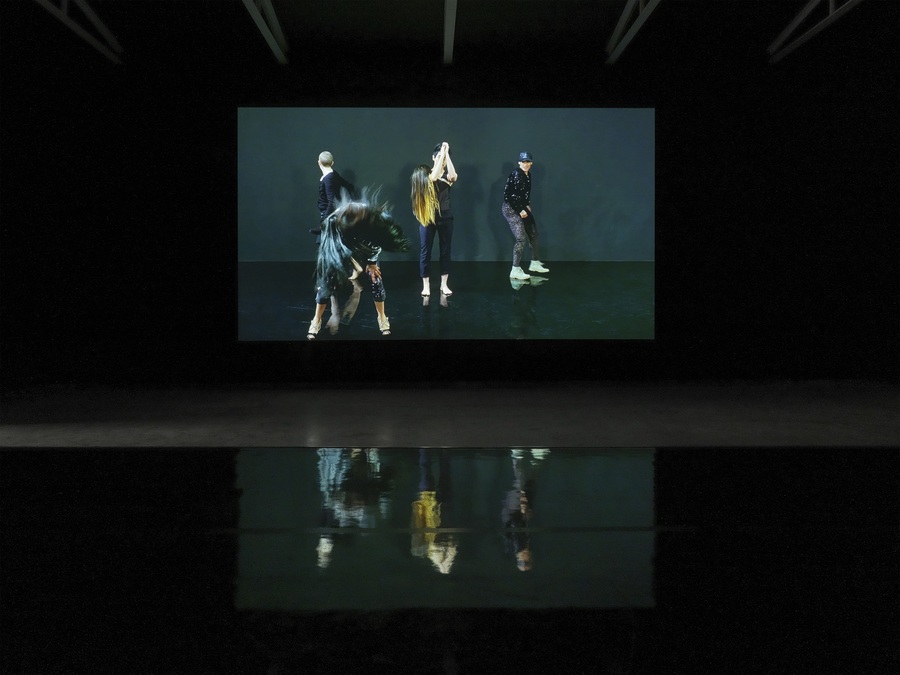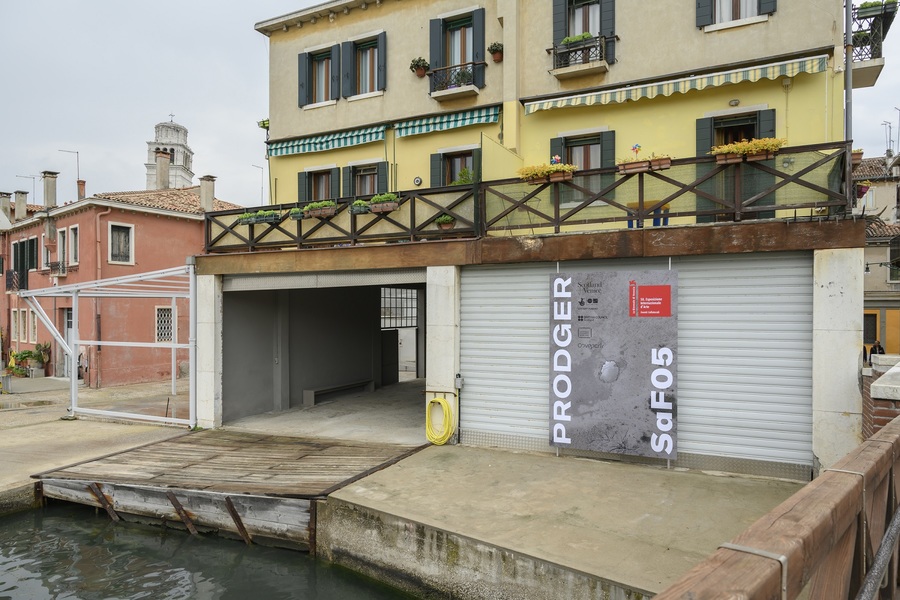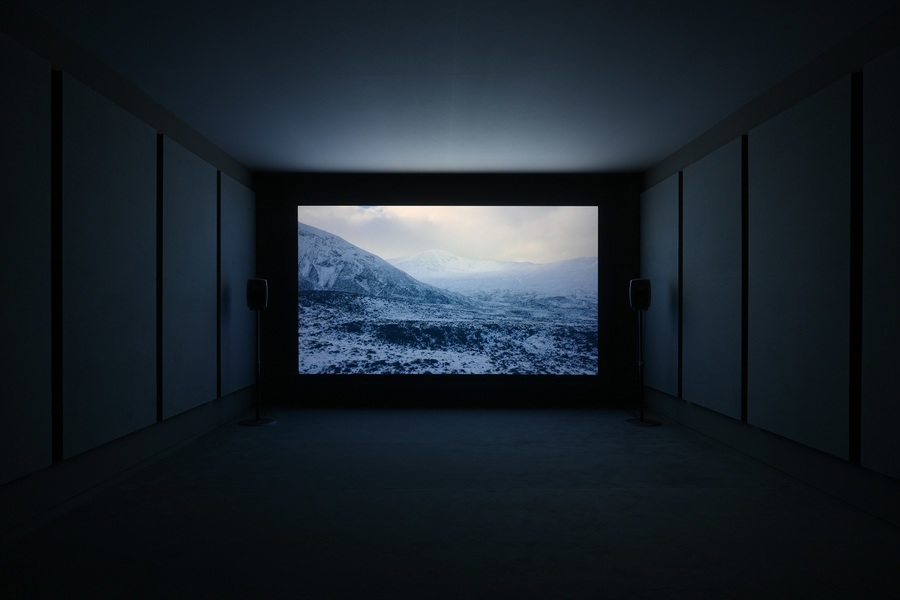Anything Can Be News: Venice Biennale 2019 review
The Venice Biennale 2019 is a (mostly) topical and politicised edit of artists' practices from across the world, and its best artworks challenge audiences' complacent world views borne of hands-off and uncritically smartphone-based spectatorship
The Venice Biennale 2019 is the 58th edition of the largest art festival in the world. This edition's theme quotes a purported Chinese curse: May You Live in Interesting Times. 'Interesting times' in 2019 can be taken as shorthand for the rise of fascism; the climate crisis that is well underway; the unprecedented and growing gulf between the world’s richest and poorest, as well as corresponding resistance movements; and hyperaccelerated technological advances. As an organising principle, it’s an acknowledgment that there are great changes happening, some good, some bad and some as-yet-not-understood.
May You Live in Interesting Times @ Venice Arsenale
At the very beginning of the Biennale's main venue, the Arsenale, there’s the stunning work of Soham Gupta. His photo series Angst documents some of the most impoverished and vulnerable people living on the outskirts of Kolkata, formerly known as Calcutta. There’s the sense that these images are a surreal, disquieting document of the impossible conditions for 10% of the world's population that lives on less than £1.46 a day.
Also reporting from extreme conditions, there's the work of Lawrence Abu Hamdan. Across eight screens is pixelated mobile phone footage of hectic activity on the border of Israel and Syria. Abu Hamdan’s video shows 15 May 2011, when 150 Palestinian protestors broke past security into the area. The short amount of video flicks across the different screens while the screams of those watching continues. Without knowing where to look now, the audience gaze darts quickly between the monitors, not sure of the level of violence or calamity that might be obscured by the pixellation.
Teresa Margolles similarly lends her socio-political subject matter renewed urgency. Margolles mounts some of the many missing persons’ posters for young women from the US-Mexican borders onto dusty glass that looks directly lifted from a rickety shop window or bus stop. The panes of glass vibrate with a rattle against the wooden frame, recognisable from cheap housing near transit routes. Margolles' sculpture shakes with wrath and fear at the ongoing femicide on the US-Mexican border, and the cultural and institutional misogyny that allows it.
Similar to Abu Hamdan in ripping found video from the internet, there's Kahlil Joseph's BLKNEWS. This is a collage film work presented in a blue-walled, red carpeted environment that incorporates a breadth of different representations of Black life from YouTube, sports programmes, stand-up comedy, music and dance videos. One particularly poignant moment shows Black American football players taking hard blows, but slowed down and reversed. By filmic means, it reverses the injury and shows the thrown football players returning to their feet unhurt. According to Joseph, “anything can be news”.
Also heading towards a kind of alternative journalism is Neil Beloufa. Beloufa shows recorded Skype calls with military personnel, displayed on games arcade-style viewing structures and with large bespoke chairs that the viewer must straddle. The content is intimate and challenging but there’s a large satisfying button that skips the track, making the screen zip visibly to those around. This takes away the privacy of media consumption, or more specifically the decision to turn off difficult truths.
The paintings of Michael Armitage also offer an alternative insight into troubling social problems. Armitage's paintings are a fabulously sensual record of the rallies before the 2017 Kenyan general election. Changing the poe-faced aesthetic of objectivity familiar from buttoned-up news, Armitage’s many bright colours, energetic brushmarks and crowded collaged compositions suggest forceful collective energy, danger and being overwhelmed by action and bodies in motion.
The theme also gives way to some nightmarish works on show, like Jon Rafman’s film made entirely using amateur computer animation software to create a richly diverse world. The plot centres around a character (just head and legs) that’s been kidnapped to be recognised by the protagonist Xanax Girl upon the release of some kind of computer virus. It also involves a mass orgy. There’s something of the David Lynch about the gross-out parts, combined with mystical dread (monks are involved), and some strange gore.
The Giardini: Japanese and Swiss Pavilions
In the Giardini (the other main site of the Biennale, a large garden with individual national gallery buildings), Japan presents a cross-disciplinary, collaborative and touching take on the natural phenomenon they dub Cosmo-Eggs. Huge screens show seamlessly looping videos of the giant boulders, formerly undersea and now washed to shore. In one, some children gather round it for a photo, and in the three others the foliage growing on its surface slowly moves in the wind.
Cosmo-Eggs 宇宙の卵 Trailer from Cosmo-Eggs on Vimeo
There are automated recorders playing 'zombie music' into the space and the same air that flows through them makes its way through a large, lifeboat orange, round inflated seat in the middle of the room that then extends to the outdoor area underneath the Japanese Pavillion. On the walls are three stories of cross-species reproduction between humans and sea creatures. There's a promise of surprising new life after severe disaster at the same time, as the ambiguous soundtrack and black-and-white longform videos strike a poignant acknowledgment of loss.
Heading down the row of buildings in the Giardini to the Swiss Pavillion, the artist duo Pauline Boudry/Renate Lorenz convert the entire space into a performance studio-turned-screening space. On screen, different performers dance and move with a captivating sense of pace and deliberation. The small gestures, like slowly walking backwards in back-to-front shoes in a reference to guerilla warfare tactics, are amplified by the attention given to each bodily micro-movement with elegant coordination. Near the end, a few clues give away that the entire video is playing in reverse. It’s an impactful reveal, and deepens the sense of wonder at the expressive achievement that the performers achieve.
Scotland + Venice: Charlotte Prodger
Outside of the main venues, there are collateral events all through Venice. This is where Scotland comes in, with new film work from Charlotte Prodger. Titled SaF05, the visuals are long shots of natural phenomena, and Prodger’s film production materials.
These are combined with an spoken audio track that combines childhood memories of (briefly) Prodger attending a religious group in Aberdeenshire, memories of queer sexual encounters and intimate relationships, and reference to the nuclear warheads stored in a hollowed out mountain in Scotland. There is also reference to the recent zoological observation of lions formerly identified as females growing manes and displaying masculine behaviours. Prodger subtly draws the disparate parts together into a convincing whole through audiovisual nuance via deft editing and sophisticated sound design.
'A reminder of the power of art to cut through complacency'
In its best moments the work featured in the festival comes as a reminder of the power of film, installation, sculpture, performance, painting and photography in cutting through complacency, and redefining audiences’ relationship with painful imagery and information. There’s the constant argument throughout that these innovatively-framed encounters contain the promise of change and action in renewing a dual emotional and intellectual connection between viewer and current events, in the widest possible sense.
At a time when data feels abundant, the mode of interaction with experience beyond our immediate lives or our own homogenous social group (marked out by median age, annual salary, political outlook, ethnicity) is increasingly predictable in its form: on a private personal screen, channeled via social media, subject to an economy of haste in its production and consumption.
Through artists like Margolles, Beloufa and the others mentioned, the Venice Biennale is a reminder to audiences of how much that they don’t (care to) know.
Venice Biennale 2019, until 24 November 2019.
Charlotte Prodger's new film will tour across Scotland later in 2019 – details of screenings can be found here


